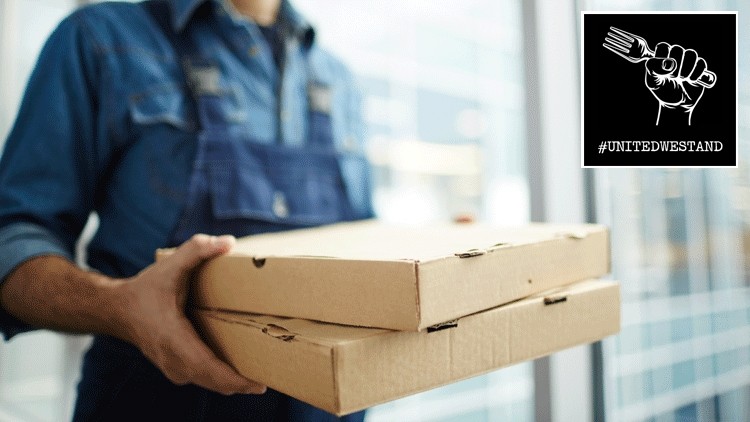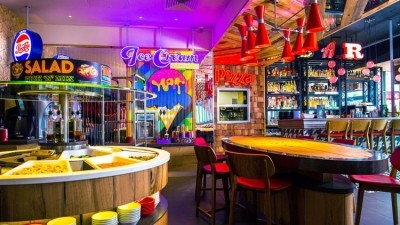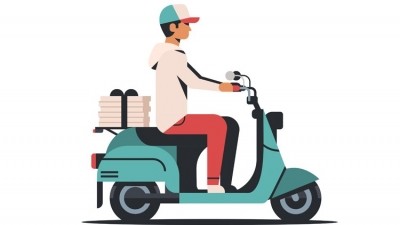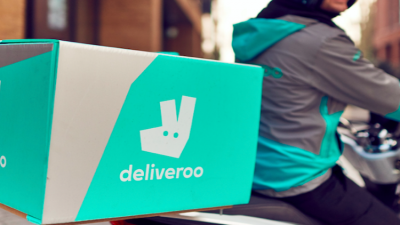Expert advice: converting restaurants into delivery-only operations

Relaxed government rules that allow pubs and restaurants to operate as hot food takeaways have opened a vital new revenue stream for many businesses at this time of crisis. Restaurants need to act swiftly and effectively in order to take advantage of offering takeaway and delivery, but there are crucial things you need to consider before you take the plunge to give yourself the best chance of success.
Make a noise online
Start with quick, agile marketing to inform the local community that your delivery service is available, advises Conor McCarthy, CEO of online ordering company Flipdish. You can reach the majority of existing and potential customers on Facebook, Instagram and Twitter with a small paid budget of £500 but given the current situation it is likely your post will be boosted by organic shares. Businesses should also update Google with new information about their delivery options.
Use your offline channels
Flyers are a good way of spreading the word, especially to the elderly who might not be active on social media, says McCarthy. “Even as more people stay at home, one of your best channels is the window space. Use it to be bold and distinctive – consider what it is you have you got that no other local restaurant has.
Set up online ordering
Offering phone orders will be tempting, but it could tie up a member of staff for the whole shift, and if you’re really busy could result in annoying as many customers as you manage to serve, says McCarthy. There are providers who can build a digital takeaway service based on an existing website or app in a matter of days. This keeps employees off the phone and in the kitchen preparing meals, as well as providing a level of resilience against staff absences. It also allows for online payment removing the need to handle cash.
Some providers are offering help at this time, so shop around. Access Hospitality has announced that it will provide free software to set up delivery and/or click and collect service, which will be free for the first two months, with Access covering the cost and all implementation fees. The company is working with its partners QikServe and Preoday to provide an online website with order and pay capability and says it can getting operators set up within 48 hours to help them get their new revenue stream up and running.
Consider Store selection
If you have multiple locations you should choose which to keep open, says delivery company Deliveroo. Factors restaurants should consider include which site would enable maximum population coverage and safe space inside stores.
Simplify your menu
In most instances, reducing your menu for a delivery-only environment will drive operational and supply chain efficiencies while allowing you to satisfy the majority of consumer demand, says Deliveroo. According to its data, 80-90% of orders placed are concentrated in less than half of menu items, which would allow for material rationalisation of menu complexity.
Reinforce hygiene standards
Coronavirus makes it even more critical for owners to demonstrate that they have robust hygiene procedures in place for the preparation and delivery of food. Introducing masks and conducting deep cleans after each service are important measures, while you must also take steps to minimise the risk of virus transmission on the doorstep. For example, Flipdish advises all restaurants to ensure their drivers are offering customers contactless delivery rather than exchanging cash.
Deliveroo also advises that businesses instil even stronger hygiene practices for all basics. It advises that staff wash hands every 15 minutes, using an alarm reminder system; sanitise all hand contact surfaces, such as dispatch tables and door knobs every 30 minutes; and deep clean stores at least weekly. It also says restaurants should buy a thermometer for the team to use and place all info posters in places that chefs can read and see frequently.
The delivery company also has published detailed guidance on how restaurants can run delivery-only outlets safely, covering issues such as how to minimise contact, packaging and hygiene best practice. It says that all restaurant staff and riders should remain two metres apart at all times. To this end, the number of riders in store should be limited and individual waiting areas should be marked clearly, for example using tape on the ground. All hand-offs should be performed without physical contact between restaurant staff and riders - staff should put the bag on a table, walk away, and then call the rider over to collect, it advises.
Rearrange your kitchen/restaurant
A delivery-only kitchen will work differently to that which a traditional restaurant business is used to. According to Deliveroo, businesses should be rearranged their kitchen to include six distinct areas:
1 Kitchen and food storage area, where very limited personnel are permitted to access
2 Hand-off area one: with chef to runner, to include a bell system to alert runner of an order
3 Staff-only area where runners pack orders for delivery
4 Hand-off area two: with dedicated dispatch tables for contact-free delivery, which also separate the staff-only and rider area.
5 Inside rider waiting area, to allow only a limited number of riders. Waiting spaces should be clearly marked with tape with riders kept well away from food preparation areas
6 Outside overflow rider waiting area with directions for riders on the door of the establishment.
In particularly busy sites, Deliveroo recommends creating a whiteboard or other signage that is visible to riders that the Order Coordinator maintains, showing the order numbers of riders who have arrived, which is crossed off when the orders are ready to collect.
The Food Standards Agency has also published advice for running a food takeaway or delivery business here.
Check your licence
Under a premises licence, the sale of hot food off the premises is not normally restricted between the hours of 5am and 11pm. However, you need to check your licence to see if there are any local and specific conditions, advises licensing law firm Thomas and Thomas. If you wish to sell alcohol by way of off-sale, this will either need to be permitted on your current licence or you’ll need to apply for a variation and/or temporary event notice, it says. The firm says it is making representations to central Government so as to extend the number of temporary event notices and the period for which they can apply.
Make it feel permanent
Transformation that feels short-lived isn’t likely to win the confidence of customers, advises McCarthy. “The restaurants that make this work will be those who transform for the long-term,” he says. There are sound business reasons to do so. “Not only does a takeaway service make the best use of the chef’s productive time and kitchen resources, but it will also drive incremental revenue once dine-in customers start to return, which will be critical in order to re-build balance sheets.”
#UnitedWeStand has been created by William Reed hospitality titles BigHospitality, Restaurant magazine and Morning Advertiser and is supported by Arla Pro, McCain and Unilever Food Solutions.
Flipdish has hosted a webinar designed to provide advice on all things Covid-19 to UK restaurateurs. Sides of the webinar can be downloaded here
To view Deliveroo's full guidance on converting to takeaway, click here



















